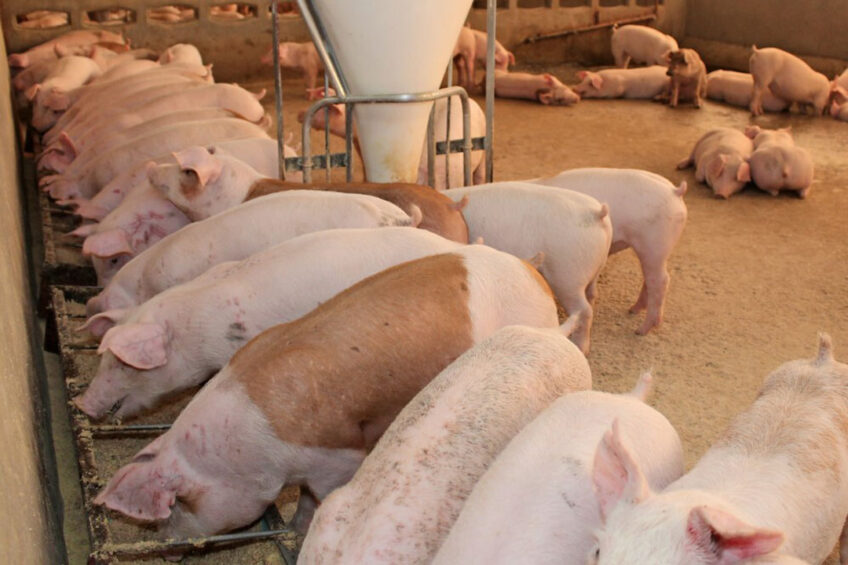ASF Thailand: A drop in demand for pig feed

The effects of the African Swine Fever (ASF) outbreaks in Thailand are now protruding in the feed market. A GAINS report by the United States Department of Agriculture (USDA) has forecasted that that Thailand’s market year 2021/22 corn imports will decline 17% from market year 2020/21.
ASF outbreaks reported since January 2022
Even though rumours had been going on for years, Thailand only admitted early January 2022 that the country has indeed been infected by ASF. A Department of Livestock Development official confirmed a case of African Swine Fever in Nakhon Pathom province on 11 January 2022. Ever since that moment, regular reports have been sent to the World Organization for Animal Health (OIE) – the current state of reported outbreaks is shown in the map below.
Outbreaks have been reported from 61 locations in 28 provinces throughout the country; all that is reported come down to cases in villages. The largest is a village where 654 pigs was affected, but very often the reports are about herds of pigs below 100 animals. The province with most reported infections so far is Ubon Ratchathani with 7 outbreaks. That province is located in the utter east corner of the country, bordering both Laos and Cambodia.
Remarkably, among the initially reported outbreaks in January was a slaughterhouses in Nakhon Pathom province. That case has not (yet) been included in the reports to the OIE. In addition, the first case was already detected on November 25, 2021.
According to the GAINS report, Thai officials and traders expect that the outbreak will reduce swine production from 19-20 million head in 2021 to 12-13 million head in 2022, dropping 35-40%. As a result, a 30% drop in swine feed demand is anticipated.
Farmers move from corn to more profitable crops
Corn production in Thailand is forecast at 5.3 million metric tons for market year 2021/22, which is 4% down from market year 2020/21. This decrease in corn production is attributed primarily to farmers shifting to more profitable crops such as cassava and sugar cane. Added to that, the production cost of corn remains high due to a surge in fertilizer costs – the wholesale price of urea fertiliser (46-0-0) in November 2021 was up 130% from the same period in November 2020.
Elevated farm-gate prices of corn
Average farm-gate prices of corn between January and December 2021 remained high at 8,202 baht/metric ton (US$ 246/metric ton), up 7% from 2020. In December 2021, average farm-gate prices of corn were around 8,970 baht/metric ton (US$ 272/metric ton), up 14% from December 2020 and well above the average farm-gate prices over the past 5 years.
Costly to import alternative feed ingredients
Higher costs of imports of alternative feed ingredients resulted in more demand for corn, which saw an increase in domestic corn prices. Meanwhile, imports of alternative feed ingredients such as barley and DDGS declined by 70% and 60%, respectively, from the same period in 2020.
It is anticipated that local feed mills are likely to utilise locally produced feed grains, such as broken rice, as domestic prices of broken rice in December 2021 dropped by 6% from the same period in 2020.
Decreased demand for wheat imports
It is forecast that wheat imports for the market year 2021/22 are 12.9% lower from the market year 2020/21 at 2.9 million metric tons. That is a result of reduced domestic demand for milling and feed wheat due to a slow economic recovery from the prolonged outbreak of Covid-19 and high import prices of feed wheat.
Wheat imports in the first half of market year 2021/22 totalled 1.23 million metric tons, down 24% from the same period in the previous year.
Droughts lead to tighter feed wheat supplies
Wheat imports are estimated at 2.9 million metric tons for market year 2021/22, down 12% from market year 2020/21. Wheat imports in the first half of market year 2021/22 totalled 1.23 million metric tons, down 24% from the same period last year. Droughts in major wheat-producing countries led to tighter feed wheat supplies and a significant increase in global wheat prices. Feed mills reportedly shifted to locally produced corn and broken rice and duty-free imported corn in their swine and poultry feed rations due to high prices of imported feed wheat.
*The information in this article has been extracted from a USDA GAINS report.











